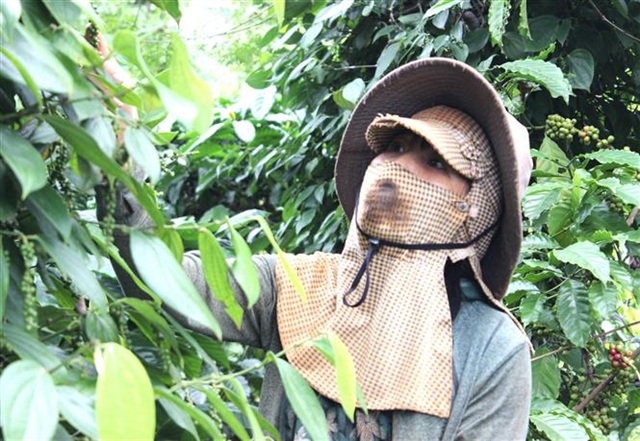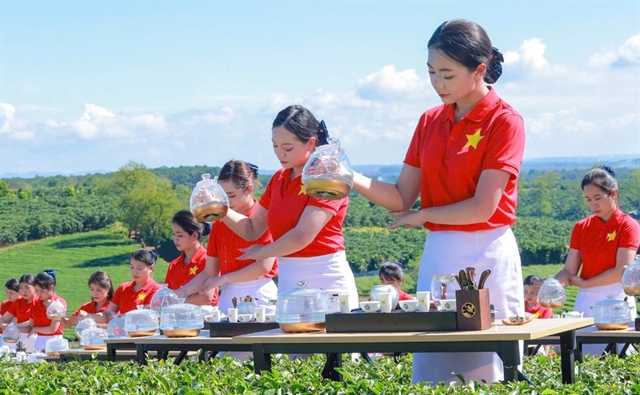 Life & Style
Life & Style

The Việt Nam National Administration of Tourism (VNAT) has launched new tours to museums, theatres and other places of historic and cultural interest in the capital to highlight their remarkable history.
by Minh Thu
The Việt Nam National Administration of Tourism (VNAT) has launched new tours to museums, theatres and other places of historic and cultural interest in the capital to highlight their remarkable history.
Tours such as “History of Việt Nam - Discovering the Earth”, “History of Việt Nam - Dawn on the Rivers”, “Vietnamese Fine Arts - Treasures in Hà Nội” and “Việt Nam Countryside - A View” will take tourists to beautiful destinations in Hà Nội and give them a chance to enjoy the city’s history, culture and art.
The move is a step in the plans of Nguyễn Ngọc Thiện, minister of Culture, Sports and Tourism, to organise quality art programmes and build cultural products to serve tourists.
Following Thiện’s direction, VNAT has coordinated with Việt Nam National Museum of History, Việt Nam Fine Arts Museum, Việt Nam National Puppetry Theatre, the Centre for Research, Preservation and Promotion of Vietnamese Traditional Culture, and travel agents to introduce tours to connect museums and theatres with tourism products.
Phùng Quang Thắng, vice chairman of the Việt Nam Society of Travel Agents, said foreign tourists to Hà Nội would now have more tour options to select from to discover the city. Electric cars and open-air buses will be used for hop-on, hop-off tours connecting the remarkable spots in the city.
“These are attractive products honouring the fine value of the capital’s history and culture,” he said.
Heritage House, 87 Mã Mây Street
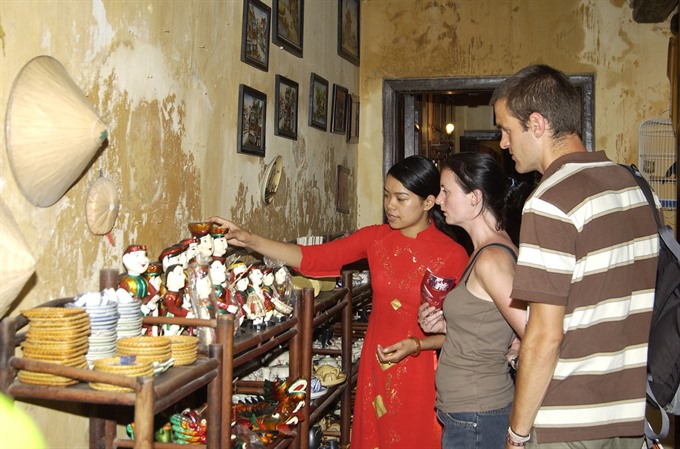 |
| Heart of the city: Heritage House, 87 Mã Mây Street is a great example of the type of architecture that once prevailed throughout Hà Nội’s busy Old Quarter. — VNA/VNS Photo Anh Tuấn |
It may be hard to imagine, but Mã Mây Street was once located on the banks of the Red River in the midst of a commercial harbour. The wooden house is a destination for the tour “Dawn on the Rivers”.
Dating back to the 19th century, this special house is a great example of the type of architecture that once prevailed throughout Hà Nội’s busy Old Quarter.
The house, with a narrow frontage, consists of two main blocks, linked together by a square yard in the middle on the ground floor, allowing light and air to flow through.
The street-facing room on the ground floor is used to sell goods. Behind it is a living room to host guests, with a kitchen and bathroom located to the rear. Upstairs has a bedroom and ancestor altar.
The balcony on the second floor is an ideal place to grow ornamental plants. Flower pots too can be arranged here to provide a relaxing atmosphere.
All the walls in the house are painted a typical yellow, like other traditional houses in Hà Nội. The furniture and decorative items are reserved in good condition. Though it was last renovated in 1999, the house continues to be an ancient beauty in itself.
Tourists can come and see how a family once lived in the city’s downtown. They can buy traditional Vietnamese decorative items, souvenir and lacquerware. The house is a 10-minute walk from Sword Lake.
Bạch Mã (White Horse) Temple, 76 Hàng Buồm Street
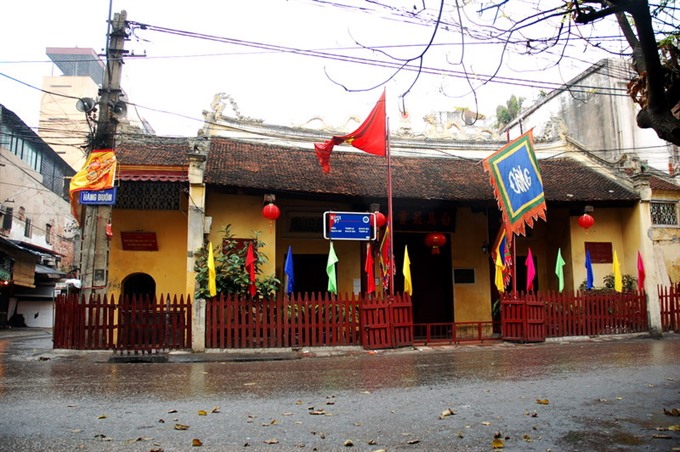 |
| Typical style: Bạch Mã Temple’s architecture bears a resemblance to that of a Buddhist temple in the north of Việt Nam, with beautifully decorated interiors and a red-lacquered palanquin. — Photo courtesy of the VNAT |
It is believed to be the oldest temple in the capital, built in the ninth century by King Lý Thái Tổ to worship the holy White Horse. The story goes that the horse had helped the king out when the walls of the Royal Citadel collapsed by using its hooves to delineate an area where the walls should have been built instead.
The temple’s architecture bears a typical resemblance to that of a Buddhist temple in the north of Việt Nam, with beautifully decorated interiors and a red-lacquered funeral palanquin.
Inside the Bạch Mã Temple is a statue of the White Horse, a shrine dedicated to Confucius and a Phoenix Altar for offerings to the four seasons. There are also altars to worship Buddha and the Mother Goddess.
The temple guards the east side of Thăng Long (former name of Hà Nội).
National Museum of Vietnamese History
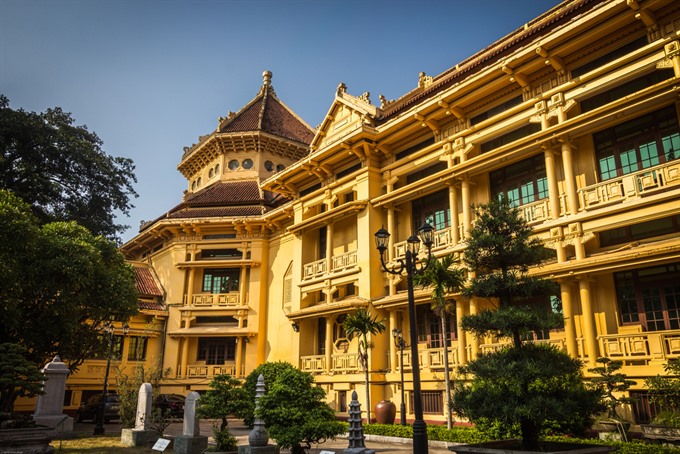 |
| Trip through time: National Museum of Vietnamese History is a must-see for history buffs. — Photo courtesy of the Ministry of Culture, Sports and Tourism |
This is a must-see for history buffs. A free audio guide is included with the tour.The museum spreads across two sites. Site One is set in a stunning colonial-era building and houses some beautiful historically important exhibits, while Site Two was formerly known as the Việt Nam Museum of Revolution.
With two gates on Phạm Ngũ Lão and Tràng Tiền streets, Site One is a magnificent example of Indo-Chinese architecture.
The building was also home to the (research centre) L’ Ecole Francaise d’Extreme Orient (EFEO), during which it became a museum to exhibit EFEO finds.
The building deteriorated over time, and it was not until the early 1930s, following a seven-year renovation, that it was ready for the public.
The entrance gives way to an impressive two-storied octagonal building, with exhibits all around and many galleries to the rear.
It covers the country’s pre-history through the Nguyễn Dynasty (1802-1945).
The museum also houses various “national treasures” recognised by the government, such as bronze drums, statue of a panpipe-playing couple piggybacking, Việt Khê boat tomb from the Đông Sơn era (circa 2,500 BC), a ceramic storage jar with brown patterns dating from the Trần Dynasty (1226-1400) and the original version of the book Đường Kách Mệnh (Revolutionary Path) written by President Hồ Chí Minh.
Site Two is just across the road, on Trần Quang Khải Street. The exhibits here show the Vietnamese people’s resistance wars against the French and American invasions and the country during the Đổi Mới (Renewal) era and integration process.
It’s worth visiting the museum with the Hà Nội Opera House, an iconic French architecture, which is a five-minute walk from the museum.
Việt Nam Fine Arts Museum, 66 Nguyễn Thái Học Street
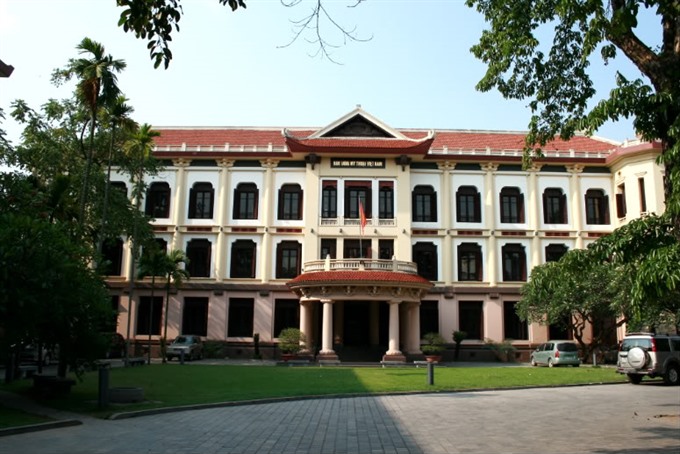 |
| Home of art: Việt Nam Fine Arts Museum is set in a stunning three-storied, 1930s-era building. A visit to this museum provides some good insights to Vietnamese culture and art as it owns the best and most diverse art collection in the country. — Photo courtesy of the Ministry of Culture, Sports and Tourism |
A visit to this museum provides some good insights to Vietnamese culture and art as it owns the best and most diverse art collections in the country.
The museum is set in a stunning three-storied, 1930s-era building, originally ordered to be built by the French to house French female students daughters who came to study in Hà Nội.
The exhibits offer a pre-historic view of Vietnamese art up to the era of the resistance wars and contemporary period through paintings, sculptures and visual arts.
A three-storied annex to the main building houses distinct galleries displaying “Applied Decorative Arts”, costumes and other arts from different ethnic groups. The first floor has folk art, ceramics and temporary exhibits.
The museum is located next to the Temple of Literature, so one can easily combine the two landmarks.
Art performances showing quintessential national culture
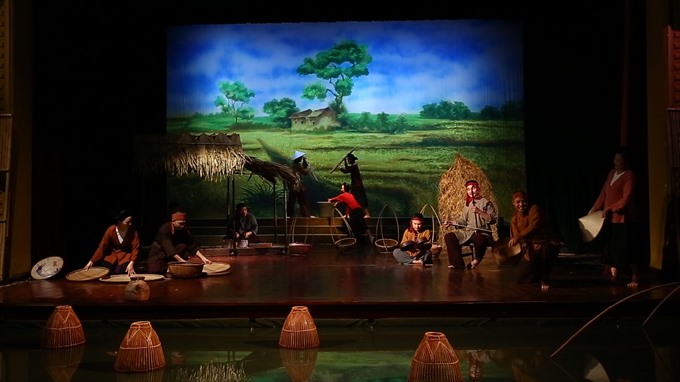 |
| Traditional life: A scene from "The Soul of the Vietnamese Village", describing the landscape, daily activities, culture and beliefs of the rural people in northern Việt Nam. — Photo courtesy of the show’s organiser. |
"The Soul of the Vietnamese Village", a show produced by the Centre for Research, Conservation and Development of Vietnamese Culture, describes the landscape, daily activities, culture and beliefs of the rural people in northern Việt Nam.
It highlights all four genres of folk music recognised as UNESCO Intangible Cultural Heritage, including ca trù (ceremonial singing), nhã nhạc (royal court music), hát văn (spiritual singing accompanied by trance rituals to worship the Mother Goddess) and quan họ (love folk duets).
The show involves a wide range of traditional musical instruments, including monochord, đàn nhị (two-string zither), đàn đáy (plucked lute), đàn thập lục (16-string zither), đàn tam thập lục (36-string zither), flutesand drum. Even kitchenware and brooms are used as musical instruments.
“The show aims to promote folk music among Vietnamese people and foreigners,” says producer Mai Tuyết Hoa.
“The music, along with the stage décor and sound effects, creates a space typical of northern rural areas. Lighting techniques and self-painted backdrops are used to add more effects to the show. We also use the sound effects of insects, birds and water flowing to remind audiences of childhood in their hometowns,” says Hoa.
Apart from the Thăng Long Puppetry Theatre downtown, VNAT will introduce a performance at the Việt Nam National Puppetry Theatre at 361 Trường Chinh Street. It’s a harmonious combination between water puppetry and stage puppetry. The show presents selective pieces featuring the quintessential Vietnamese culture. VNS

